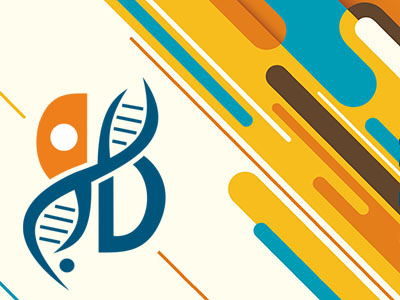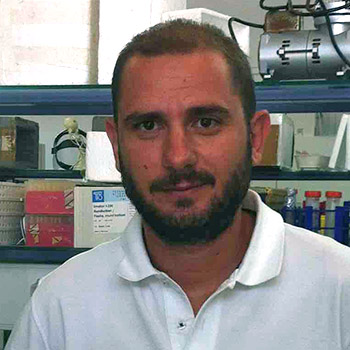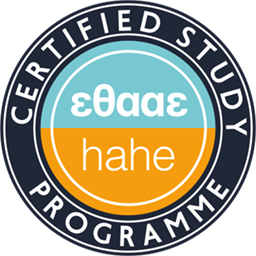Environmental Biotechnology

Theory: 3 hours/week | Practicals: 2 hours/week | ECTS Units: 5
Content – Aim of the course
This course aims to introduce the fundamentals of Environmental Biotechnology. The course will introduce to the students the major groups of microorganisms-tools in biotechnology and their most important environmental applications. A lecture will focus on the presentation of the role of microorganisms in the geochemical cycles of the most important elements in nature like C, N, P, S, FE and other metals. The environmental applications of biotechnology will be presented in detail and will be supported by examples from the national and international literature. Such environmental applications of biotechnology include: bioremediation of natural resources, production of biofuels (biogas, bioethanol, biohydrogen), applications in agriculture, applications in the paper and plastic industry as well as in other industrial processes in order to promote processes minimizing environmental deterioration. The theory of the course is accompanied by a series of practical sessions which aim to introduce to the students the use of basic microbiological, molecular and analytical methods which are extensively used in environmental biotechnology.
Analytical Description of the Course
- Introduction to Environmental Biotechnology and key-microorganisms
- Role of microorganisms in geochemical cycles
- Environmental pollutants and their microbial transformation
- Organic and inorganic pollutants
- Mechanisms of microbial catabolism of pollutants
- Bioremediation: Fundamentals, methods and strategies of application (biostimulation, bioaugmentation) – examples, bioremediation of metals (Cr, As, Se, Hg), radionucleides (U, Te), organic pollutants (PAHs, PCBs, Pesticides, TNT etc), technological aspects of bioremediation (in situ, ex situ)
- Application of bacteria and fungi in bioremediation: White rot fungi vs specialized degrading bacteria: examples, uses and advantages vs disadvantages
- Phytoremediation: Fundamentals and description of major methods of application (phytoaccumulation, phytovolatilization, rhizofiltration phytostabilization)
- Environmental Biotechnology and Agriculture:
- Bioinsecticides: Bacillus thuringienis, Baciloviruses, uses, genetic modifications and aspects of safety in their use.
- Biofungicides: Description of mode of actions and mechanisms (e.g. Trichoderma, Pseudomonas fluorescens)
- Biofertilizers: Symbiotic systems between plants – microorganisms (nitrogen fixing symbiosis, mycorrhiza fungi symbiosis), Plant growth promoting rhizobacteria (PGPR) – uses, practical aspects and problems in application
- Environmental Biotechnology and biofuels:
- biogas
- bioethanol
- biodiezel
- biohydrogen
- Description of the industrial processes involved, microorganisms and biotechnological interventions for optimization of production
- Other Industrial applications of Environmental Biotechnology
- Microbially enhanced oil recovery (MEOR)
- Bioleaching of metals
- Production of bioplastics
- Production of biosurfactants – bioemulsans- Paper production: use of xylanases and white rot fungi
Practicals
- Microbial degradation of organic pollutants
- White rot fungi: Determination of enzymatic activity of laccase and Mn-Peroxidase in cultures Phanerochaetechrysosporium, Pleurotusostreatus, Trametesversicolor
- Selection of bacteria with degrading traits against organic pollutants
- Arbuscular mycorrhizal fungi
- Isolation of mycorrhizal spores from plant roots using a microscope, staining of roots for estimation of mycorrhizal colonization
- Estimation of plant growth promoting effects of arbuscular mycorrhizal fungi – experiment
- DNA extraction methods from environmental substrates
- Molecular fingerprinting techniques for estimation of microbial diversity
- Denaturating gradient gel electrophoresis
Evaluation
The students are evaluated based on their performance in written exams given at the end of the semester.
Reading Suggestions
- Scragg A. 1999. Environmental Biotechnology. Pearson Education Limited.
- Evans GM, Furlong JC. 2003. Environmental Biotechnology. Theory and Application. Willey and Sons.
Teaching Material / E-class
Website of the course Environmental Biotechnology in the Εclass system of the University of Thessaly where all announcements, past papers and the content of the lectures can be found and downloaded by the students
https://eclass.uth.gr/courses/BIO_U_154/
- Website of the research project ECOMYCORRHIZA
http://ecomycorrhiza.bio.uth.gr - Website of the Hellenic Society of MIKROBIOKOSMOS
http://www.mikrobiokosmos.org - Website of the Federation of European Microbiological Societies (FEMS)
http://www.fems-microbiology.org - Website of the American Microbiological Society (AMS)
http://www.asm.org - Website of the International Society of Microbial Ecology (ISME)
http://www.isme-microbes.org - Website of the Society of Environmental Toxicology and Contamination (SETAC)
http://www.setac.org - Website of the Society for Applied Microbiology
http://www.sfam.org.uk - Website of the International Mycorrhiza Society
http://www.mycorrhizas.org
Lecturers

Dimitrios Karpouzas (Course Coordinator)





